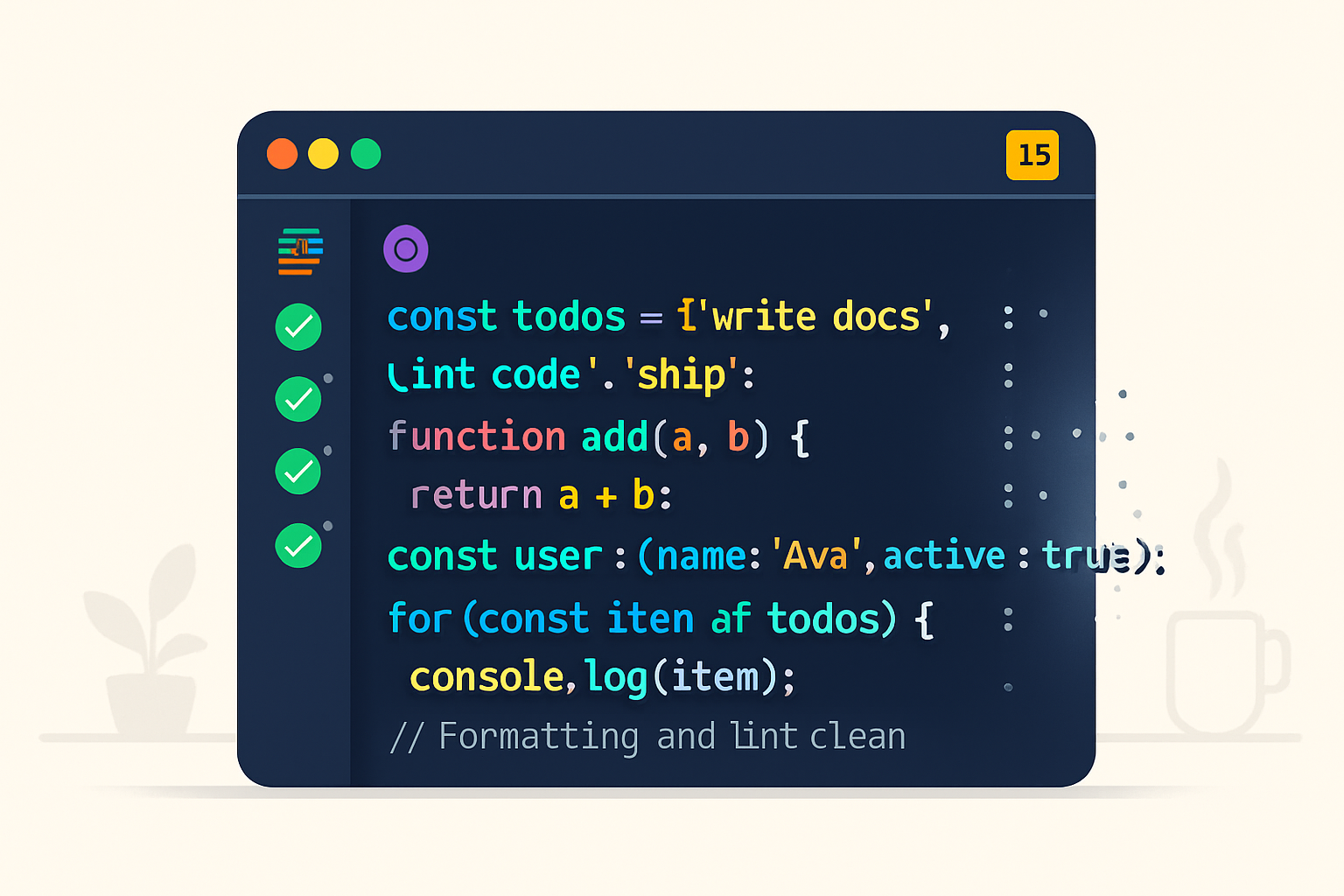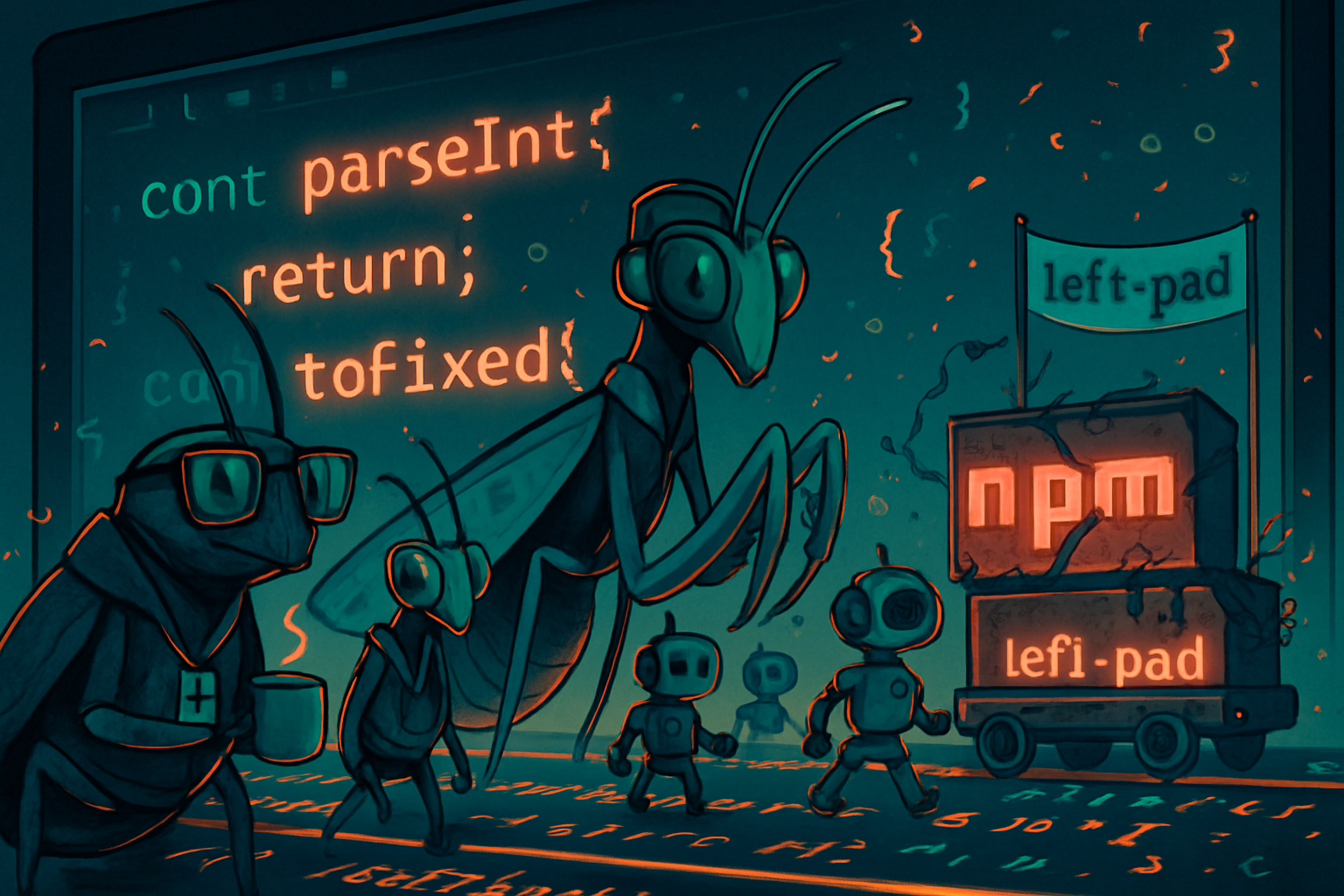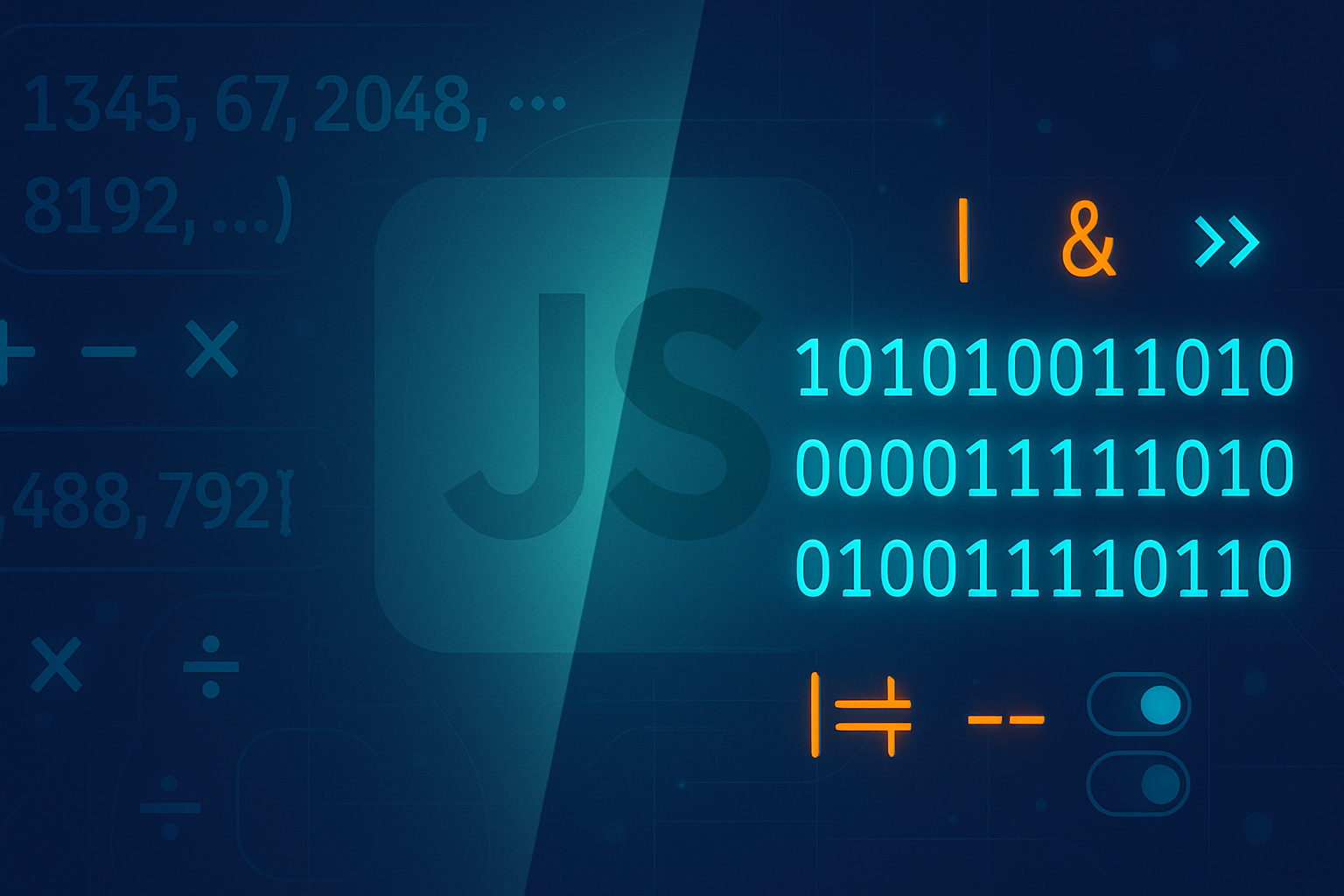· tips · 6 min read
The Semicolon-Free Revolution: Embracing JavaScript's Automatic Semicolon Insertion
Learn how JavaScript's Automatic Semicolon Insertion (ASI) works, why many developers omit semicolons, the pitfalls to watch for, and practical rules and tooling to safely write semicolon-free code.

Outcome first: by the end of this post you’ll know what Automatic Semicolon Insertion (ASI) does, why some teams confidently write JavaScript without semicolons, the gotchas to watch for, and exactly how to adopt a semicolon-free style safely with tooling and clear rules.
Why this matters (quick)
Semicolons are optional in JavaScript because the language has a built-in mechanism - Automatic Semicolon Insertion (ASI) - that inserts semicolons in many places where the grammar requires them. When used intentionally, ASI can reduce visual noise and make code feel cleaner. But misuse or ignorance of edge cases can introduce subtle bugs. You can embrace a semicolon-free style and be safe - if you understand ASI and set up your tooling.
What is Automatic Semicolon Insertion (ASI)?
ASI is a set of rules in the ECMAScript specification that tells the parser to insert semicolons automatically at certain points where statements would otherwise be incomplete. In short: if the parser encounters a line break that makes the token stream invalid for continuing the current statement, it may insert a semicolon to end the statement for you.
Authoritative references:
- MDN: Automatic semicolon insertion
- ECMAScript spec: Automatic Semicolon Insertion section (search for “Automatic Semicolon Insertion”)
A short history and why semicolon debates persist
Semicolons came from C-like syntax where they unambiguously terminate statements. JavaScript, designed for quick scripting and forgiving syntax, allowed them to be optional and introduced ASI to ease the developer experience. Over time a culture split emerged: some prefer the explicitness of semicolons, others prefer the minimalism of no semicolons. Both camps have strong opinions - but both can be correct if rules are followed.
How ASI behaves - practical examples
ASI is intuitive in many cases, but a handful of patterns are commonly problematic. Below are the most important ones to know.
1) return, throw, break, continue - put the expression on the same line
If you put the returned value on the next line, ASI will terminate the return before the expression, which is usually a bug.
// Surprise: returns undefined
function getUser() {
return;
{
name: 'Alice';
}
}
// Correct: put the value on the same line
function getUser() {
return {
name: 'Alice',
};
}Same for throw:
// Bug: throws undefined because ASI inserts semicolon after throw
function bad() {
throw
new Error('problem')
}2) Lines starting with ( or [ (and IIFEs)
If a line begins with (, [ or template literal backtick when the previous line could be an expression, the parser may treat it as a continuation of the previous statement instead of a new one. A classic example is immediately-invoked function expressions (IIFEs):
// Could run the previous statement as a function call accidentally
const x = 1(function () {
console.log('IIFE');
})();
// Defensive pattern: prefix with semicolon
const x = 1;
(function () {
console.log('IIFE');
})();If you adopt a semicolon-free style, you must be disciplined to either avoid such ambiguous sequences or intentionally prefix those lines with a semicolon (a common micro-pattern).
3) Unary operators ++/-- when separated by newlines
Putting ++/-- on the next line can cause different parsing than expected:
let a = 1;
let b = 2;
// This does NOT increment a; it's parsed as two separate statements
a;
++b;
// Safer: keep operator on same line
let a = 1;
let b = 2;
a++;
++b;4) for loops and semicolons in syntax
Note: you still use semicolons inside for loop headers. ASI doesn’t apply inside the parentheses of for headers.
for (let i = 0; i < 10; i++) {
/* ... */
}5) Template tag and division ambiguity
Starting a line with / can be parsed as a division operator rather than a regex literal depending on context. This is an advanced parsing edge and another reason to be cautious.
Pros of removing semicolons
- Cleaner visual rhythm: fewer punctuation marks to scan, which some developers find more readable.
- Opinionated style: projects like StandardJS show semicolon-free can be consistent and productive.
- Less typing. Small but real.
- Works well with modern tooling (formatters and linters) that can auto-fix or enforce consistent style.
Cons and risks
- Subtle bugs in the edge cases listed above (return, throw, IIFE, unary operators) if you or teammates aren’t aware of them.
- Cross-language friction: developers coming from Java/C/C++/TypeScript may expect semicolons and find code noisy if omitted.
- Reliance on tooling. Without linters or formatters, codebases can accidentally introduce the risky patterns.
How to adopt semicolon-free safely - practical rules
If you decide to go semicolon-free, follow these rules.
- Choose the style project-wide. Use an explicit config and enforce it.
- Use a formatter (Prettier) and linter (ESLint) with autofix enabled.
- Prettier option:
semi: false(Prettier docs) - ESLint rule:
"semi": ["error", "never"]
- Prettier option:
- Never put
return,throw,break, orcontinueon a line by itself when there is an expression following it. Keep the expression on the same line. - Be careful when starting lines with
(,[, or`- either prefix with a semicolon or avoid the pattern. - Keep
++/--on the same line as the operand. - Add tests and CI checks. Linting should run in CI and fail the build if the style is not followed.
Example ESLint and Prettier minimal setup snippets:
// .eslintrc.json
{
"rules": {
"semi": ["error", "never"],
"no-unexpected-multiline": "error"
}
}
// .prettierrc
{
"semi": false,
"singleQuote": true
}no-unexpected-multiline helps catch accidental multiline pitfalls.
Tooling and popular styles
- Prettier: widely used formatter. Configure
semi: falseto remove semicolons automatically. prettier.io - ESLint: enforce rules and catch dangerous patterns. eslint.org
- StandardJS: an opinionated no-semicolon style guide and linter that many projects use. standardjs.com
- AirBnB style guide: prefers semicolons (so if you follow AirBnB, keep them). airbnb/javascript
Pick the tooling that matches your team’s preference and integrate it into pre-commit hooks (husky) and CI.
Migration plan (practical steps)
- Decide as a team. Style wars otherwise kill velocity.
- Update Prettier/ESLint configs and add autofix commands.
- Run the formatter and linter autofix on the entire repo in a single large commit.
- Run tests and fix any issues (look specifically for IIFE, return, throw, and unary operator locations).
- Add pre-commit hook (e.g., husky + lint-staged) to keep commits consistent.
- Enforce in CI.
Examples of real-world safety patterns
- Use a leading semicolon in library files where concatenation or unknown previous code may occur, or place IIFEs behind a semicolon if you aren’t 100% certain of context.
// Leading semicolon to protect against previous concatenated code missing semicolon
(() => {
// module code
})();- Keep
returnandthrowvalues on the same line. Never put them alone on a line.
Final considerations and recommendation
The semicolon debate is largely stylistic. ASI allows JavaScript to work without semicolons and many successful projects adopt that approach. But the safety of the semicolon-free style depends on two things: discipline and tooling. If you use a formatter (Prettier) and a linter (ESLint) configured to disallow semicolons, add CI checks, and follow the practical rules above, semicolon-free JavaScript can be cleaner and just as safe as semicolon-terminated code.
Choose intentionally. Enforce consistently. Rely on tooling rather than memory. And remember: fewer characters does not mean fewer rules.
When you understand ASI, use disciplined patterns, and protect your codebase with formatters and linters, ditching semicolons becomes a maintainable, low-risk choice - you can remove the noise without removing the guardrails.



